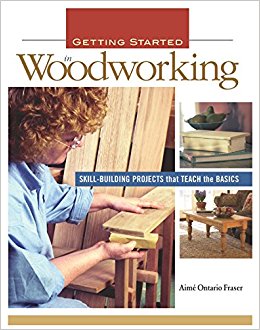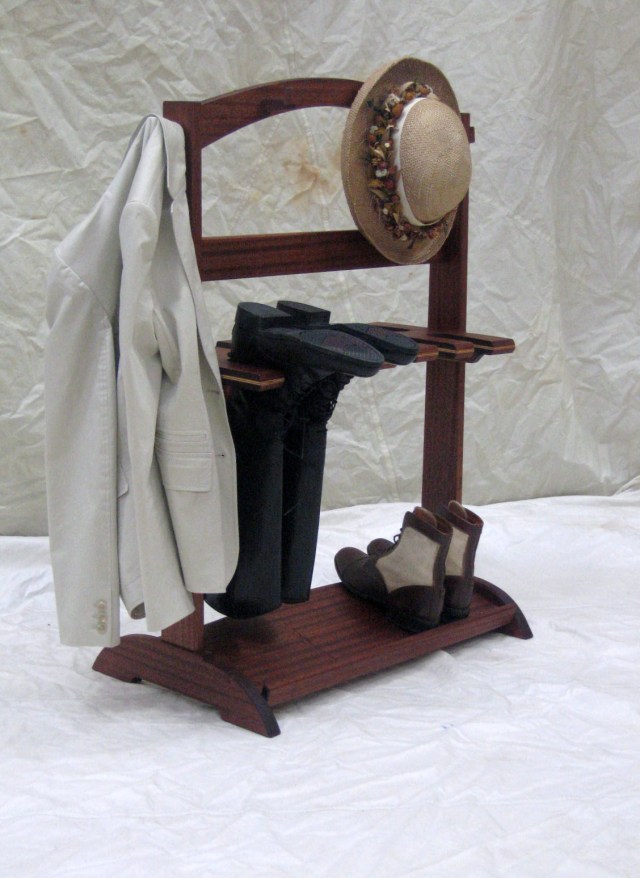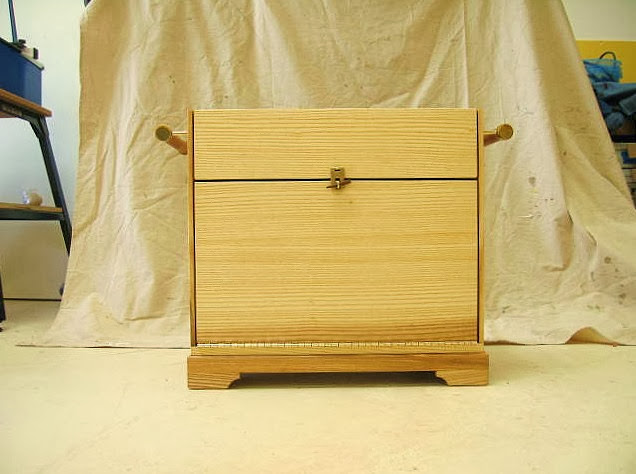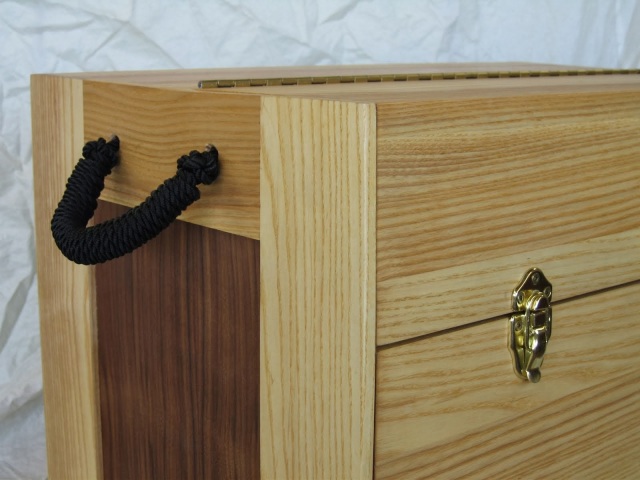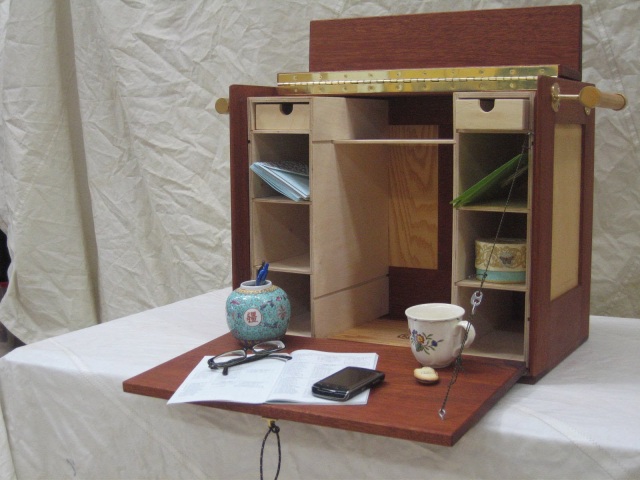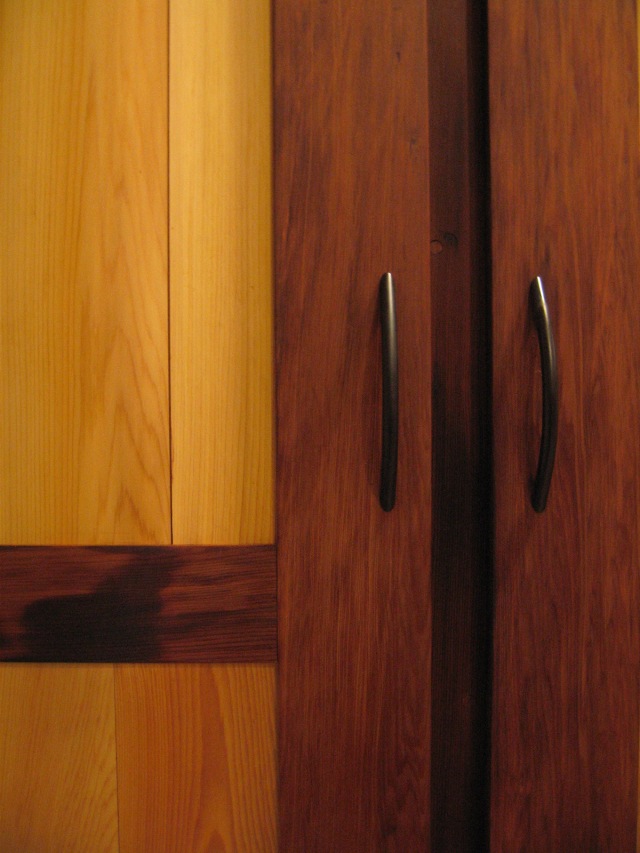Editor’s note: This time we discuss an antique chair with a finish that is “a wet antiquarian’s wet dream.” Or “Torched Feces” as Rudy would call it. The chair in total is maybe too perfect to be true, and sometimes Wales stretches all the way to China. We still love it. And as always, we don’t expect anyone to take any of our theories seriously. Chris also wishes for a blacksmith screw and regrets it immediately. As always, the language here is a bit on the salty side and we do mention words like “joint” and “shaved” several times. For those who only have Sting records in their collection, please stop reading now and click this link instead.
Chris: How ’bout we drag out the comb back?
Klaus: Let’s do it! Here it is:

Rudy: Here’s the info from the antiques dealer: “Original late 18th Century painted Welsh comb back chair. Mixed woods elm & ash.
Dimensions:
95.3 cms High (37.5 inches)
55.9 cms Wide (22 inches)
78.7 cms Deep (31 inches)”
Chris: Is this chair from Far East Wales?
Rudy: I think it may be!
Klaus: This definitely looks like a Far East Wales chair, yes. Very far east.
Rudy: Judging from the weird finish.
Klaus : The finish IS weird.
Chris: Featuring a Far East Wales Finish That is Too Good?
Klaus : I would at least suspect that.
Chris: The finish is an antiquarian’s wet dream.

Rudy: And it is evenly worn on the sticks..
Klaus: And totally worn off on the back of the crest..?!
Chris : That’s because Welsh horses rubbed against it for 200 years.
Klaus: Of course.
Rudy: True, did you not know that is what they do?
Klaus: By Welsh horses you mean the Welsh men’s wives?
Chris: No. Their sheep. Same thing.
Rudy: Haha!
Klaus: So I’ve herd.
Chris: Herd! Haha.
Rudy: The chair looks a bit like World War II German SS camouflage uniforms.

Chris: Oh it’s Nazi time already?
Klaus: Can we call this a Nazi chair?
Chris : Not again!
Rudy: Hitler would have been proud! Just don’t put the chair outside or you’ll never be able to find it again.
Chris: I’m afraid this chair was born way after Hitler. But damn the form is nice.
Klaus: Unfortunately, I think Chris has a point here. This chair was probably made with a Festool router.
Rudy: Well to be fair, Hitler was born a long time ago.
Rudy: The form is nice – that is why we picked it! I like its inviting stance.

Klaus: Yeah, LOVE the stance.
Chris: Like I don’t even know where to start with this chair. It’s so good.
Klaus : Even the imperfections, like the uneven bow in the long sticks, are nice.
Rudy: The crest. I like the crest.
Klaus: Yeah, the crest is gracious.

Chris: I love the through-tenons in the crest.
Klaus: Yes, me too.
Chris: So wonky and so good. TOO GOOD.
Rudy : Yes, very well done indeed. It gives the chair a lot of character.
Klaus: The crest has a perfect shape. Perfect length, too. I wanna make a crest like that.
Rudy: Me too. It looks balanced, but spontaneous.
Chris: It will be a bitch to drill. I’d make it with straight edges first. Drill the mortises. Then shape it. Or maybe you could shape it first and drill the mortises in a vise.
Klaus: The back tilt of the arm is great.
Chris: And the way the hands are raised up. Like GIVE ME A HUG!
Klaus: The arm is also a three-piece arm, with some kind of half-lap joint. And I love the long doubler on this one, too.
Chris : You can see the joints in one of the photos.

Chris: I think this guy should do a chair book for Lost Art Press.
Rudy: Very talented!
Chris: I’d love to see how he/she works. By the way, I like the curved posts at the front. I did that on one chair and want to get back to it.
Rudy: True, that adds to the inviting character of the chair.
Klaus: Did you also make them flat like these?
Chris: Kinda. They were from curved branches. Shaved a little roundish.
Klaus: Are they mortised through the arm with a square mortise?
Rudy: It looks like they are epoxied onto the seat.
Chris: Mine was mortised into the seat with a round tenon (wedged from below). And then I (cringe) screwed it to the underside of the arm.
Rudy: Will the blasphemies ever stop…
Klaus: We all have our sins..
Chris: It was a square-drive screw. I have sinned. Bad.
Klaus: Oh no.
Chris: I meant to replace it with a blacksmith nail…
Klaus: …but the pocket screw was so solid…
Rudy: Or a blacksmith screw!
Chris: I would love a blacksmith screw! (He said, immediately regretting the choice of words).
Rudy: I know one here in Germany. He would be happy to screw you.
Klaus: Haha! Anyway, how come this maker makes the chairs look like they’ve been drowned and tossed out a window? Assuming of course, that this chair is younger than my daughter’s hamster.
Chris: They sell like this. People love this look.
Rudy: The chair does indeed look a bit like a corpse that has been submerged for three weeks.
Chris: We have a guy near here who specializes in this finish. He does it with a torch.
Klaus: Interesting. I will throw my next chair out of the window then. Then burn it afterwards.
Rudy: I will have to experiment with this technique too, then. I think this looks torched as well, now that you say it.
Chris: We did an article on it at Popular Woodworking years ago. Remind me to dig it up for you.
Klaus: Chris, can you dig up that article about fake old finishes from Popular Woodworking?
Rudy: Chris, could you please dig up that article you did in Popular Woodworking years ago?
Chris: F&%# you!
Klaus: Haha. Anyway, let’s be friends.
Rudy: Yes. Let’s be the peaceful Chair Chat Ladies.
Klaus: I’m not a big fan of the broomstick legs.
Chris: At least they aren’t tree trunks. What I would like to know is how high the armbow is off the seat – at the back and the front.
Klaus: I’d say 7″ at the back and 8-3/4″ in the front.
Rudy: It looks pretty low at the back.
Chris: Agree. And the back sticks look like they pitch back pretty severely. More like a Gibson.
Rudy: Totally, I was going to say that. Especially under the armbow.
Klaus: Very leaned back. Looks super comfy.
Chris: Agree! It leans Almost to 25°, maybe 20°?
Klaus: The deep seat, the heavily leaning back and the lifted arm – it all pitches you into the chair.
Chris: Yup. Dude knows how to push my chair buttons.
Rudy: Mine too. The bastard.
Klaus: All the parts are also proportional to each other in size. That’s nice.
Rudy: Yes, it is a very balanced chair.
Chris: And its perfection is what led me to say: Far East Wales.
Rudy: I wonder if he/she works from historical examples or their own design?
Chris: Well , there is at least no awkwardness about it.
Klaus: Absolutely none.
Chris: And almost all of these chairs, the real antique ones, have some fault that is charming by being off.
Klaus: Yes, exactly. The imperfections make them perfect.
Rudy: Look at that back leg, how the tear-out from that knot gives it character.
Chris: Yeah. But it’s too perfect. Like a scar on a supermodel.
Klaus: Well, if that is done intentionally, then my hat is off for this maker. I don’t wear hats, but I would for this guy.
Chris: It doesn’t really make it wonky. Just cool.
Rudy: In some way the chair is so perfect I would like to see one without the torched paint finish.
Chris: I know a couple people who work in the Fake Trade. They do stuff like this all the time. Many times they use old parts to make a new fake antique.
Rudy: I believe that is what happens here, too.
Klaus: I’ve heard about shipping containers full of chair parts from old chairs, going from the UK to China.
Rudy: But can they re-use the seat?
Chris : I would think no. But I’m no Fake Artist. If it were me, I’d want all the wonky sticks. And legs.
Rudy: In some way it is a nice thing that the chair parts have a second life.
Chris: Better than firewood!
Klaus : Sure, just don’t sell it for $4,000 USD.
Chris: I don’t have a problem with the price. Just the deception.
Rudy: Yes, they should not be called Original late 18th Century.
Chris: Fakes have to be called out. Or they become part of the furniture record. Museums are reportedly full of fakes.
Klaus: I have become so disillusioned lately. I can’t even look at an antique chair anymore without suspecting it’s from Far East Wales. Anyway, did we have any poop or fart jokes at all today?
Rudy: Poop!
Klaus: Fart!
Chris : Well I hope that feces is involved in the finishing process.
Rudy: It sure looks like that!
Klaus: Something has definitely been smeared onto it.
Rudy: Torched feces.
Klaus: The Torched Feces Finish Chair™.
Rudy: The SS Torched Feces Camouflage Chair™.
Chris: That’s the name of the chair! …and my next punk band.
Klaus: Hello, I’m Chris and we’re SS Torched Feces Finish!
Chris : Hello Cleveland!
Klaus: This first song is called The Queen Poops Too!
Rudy: And song number two:
Chris: Hahaha! Shi&&y song.
Klaus: And the bonus track: Blacksmith Screw!
Rudy: Out now in Cleveland only!
Chris: Let’s go on tour!



















